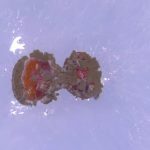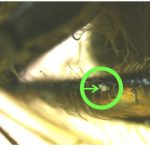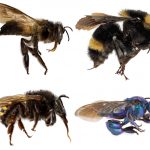
Printable edition
- President’s Message, June 2021

2021 continues to be an interesting beekeeping year! Last year, our June meeting was the first ever to be offered in a purely on-line format. Dr. Dave Tarpy was our keynote speaker. Three meetings later, I hope we have improved as we hold more hold meetings online via Zoom, and that MSBA still provides excellent programs based on your support.
I am so excited that we are hosting both Dr. Jamie Ellis and Dr. Marla Spivak at our June meeting! They are both powerhouses of knowledge and experience. I am particularly excited because Jamie Ellis drove me to want to learn more about bees after hearing aa previous lecture he gave bee biology. He is an eloquent speaker, and led me to continue down the road to becoming a better beekeeper. Fred Smith has prepared a wonderful meeting for us: let’s all enjoy.
We are now looking forward to restarting face to face MSBA meetings in November. While following all CDC guidelines, we are planning our November meeting a hybrid meeting: it will be face to face but MSBA will still offer a Zoom option for anyone who chooses to participate from home.
EAS has become a smaller meeting this year, and will take place as a three-day event. It is only a nine hour drive away! Mike and I will be going because this is one of our favorite “bee events” of the year. If you are going, order your MSBA t-shirt in goldenrod yellow and wear it proudly. It helps us meet fellow Maryland beekeepers at the larger meetings. Say hello and help build our community!
We have several new programs in process. In particular, the recently formed education committee has started building some new classes in conjunction with the UMD Bee Squad. This offers additional education opportunities for our entire association, and I am very excited to see it come together. In January, we hope to once again offer our all day splits and nucs class, if we can find a venue and if it is safe to hold it. We also hope to hold the honey show judging class which had to be postponed in 2020.
As an association, the board has voted to shut off open access to the membership directory. Only the required board members will have access to your emails, and counties in the future. We are making a single exception: people who register for a class will see others who are also participating to allow for car pooling. Those lists will disappear as the classes are held.
This is absolutely my favorite time of the beekeeping season! Taking a new mentee into their first hive, rejoicing in finding queens, and listening to a healthy hive are special moments. Soon it is time for the work of the honey harvest, and making the new queens for August requeening. Then the cycle begins again!
Please be responsible beekeepers, do your mite checks, report them into the mite survey, and register your hives for free with Cybil Preston, MDA's State Apiary Inspector.
Notes from the Apiary Inspector
- Notes from the Apiary Inspector
Cybil Preston, State Apiary Inspector, MDA
Phone 410-841-5920, Fax 841-5835, Cell 410-562-3464Happy Summer! I hope all are well and healthy.We are slowly coming out of the changed work structure due to the COVID-19 pandemic. We are easing back into our normal random inspection routine.National Honeybee SurveyWe will again participate in the National Honeybee survey. I am looking for beekeepers with 8 or more beehives in the same location, who would be willing and wanting to participate. This program is free of charge! An inspector will visit in order to take samples of bees and beebread from each colony. Tests are run on the samples and the beekeeper will get a print out and run down of hive issues and viral levels.The level of detail and the range of tests is extraordinary and deeply informative. Anyone wishing to participate should contact me: Cybil.preston@maryland.gov.InvasivesWe are again participating in the Invasives/Asian Giant Hornet survey. Currently we have traps at the Port of Baltimore and at the Airport.About this SpringThe crazy up and down temperatures this spring made it difficult to make splits and nucs and to rear queens in some areas. The same weather fluctuation is also to blame for the shortened honey flow in some areas. The early heatwave hurt some locust blooms in other locations. Things must be coming around, however, due to ALL the swarms I am hearing about.AFB DogsThe honeybee disease detector dogs are now on VACATION til the fall and weather gets colder. They are currently spending their days snoozing and swimming.
Reducing Colony Stress through Best Management Practices– with Special Attention to Virus Transmission by Hive Products
- Reducing Colony Stress through Best Management Practices– with Special Attention to Virus Transmission by Hive Products
by David S. Schultz
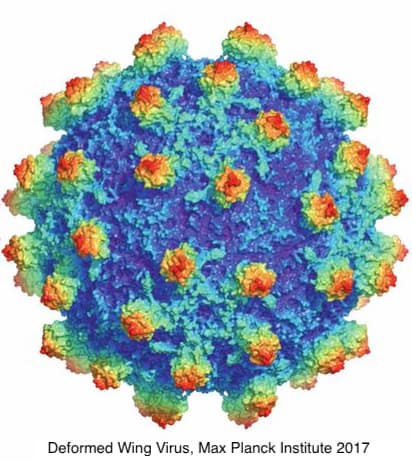 I have been asked for many years about the re-use of hive products from colony dead-outs into our new spring colonies. During the past couple of years, I have read hive product re-use Best Management Practices (BMP) that discuss deep freezing any frames from dead-outs for a period of at least 48 hours prior to re-use in other colonies. Of course, this advice applies assuming that there is no suspicion of American Foulbrood (AFB) in the dead-out hives, in the case of which the state apiary inspector should be contacted and the equipment should be burned.
I have been asked for many years about the re-use of hive products from colony dead-outs into our new spring colonies. During the past couple of years, I have read hive product re-use Best Management Practices (BMP) that discuss deep freezing any frames from dead-outs for a period of at least 48 hours prior to re-use in other colonies. Of course, this advice applies assuming that there is no suspicion of American Foulbrood (AFB) in the dead-out hives, in the case of which the state apiary inspector should be contacted and the equipment should be burned. Recently, a 2020 paper from the Institute of Bee Health, University of Bern, Switzerland, titled “Honey Bee Virus Transmission via Hive Products” and written by Dominik Schittny and colleagues (http://www.mdpi.com/2306-7381/7/3/96), was introduced to me by one of my Master Beekeeper Candidate colleagues, Lisa Marie Ghezzi. This paper has some interesting, if not concerning, information regarding the use of hive products from one hive to another. In order to get my head around the results of this study, I conducted a limited literature review. I started this project with the intension of seeing if I could find other similar studies and helping me to develop a new set of BMP for my colonies and those of my mentees. During my review of various studies, I found some interesting related topics regarding honey bee genetics and immune responses to induced stresses. Since my journey during this review was enlightening and is worth sharing, I will be discussing the papers that I reviewed in chronological order, adding my comments and questions, and concluding with a list of BMP that I believe will minimize stresses and negative consequences for our colonies. I would like to credit Lisa Marie Ghezzi and my wife Jennifer Bess for their help in reviewing, editing, and contributing to this work.
PROCESS
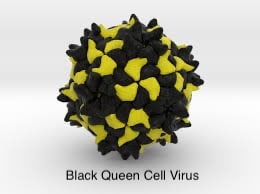 I did not do an exhaustive search; however, I spent several weeks looking for information about viral transmission and focused my search on the Deformed Wing Virus (DWV). DWV is ubiquitous in honey bees, is vectored by the Varroa mite, and is found even in one of the only reported Varroa free locations, Australia. DWV is also at the center of the July 2020 paper on virus transmission referenced above. I enlisted the help of Tom Jacobs, DVM to review the “Honey 2 Bee Virus Transmission via Hive Products” study to give me feedback on the quality of the study and the conclusions. Dr. Jacobs feels that overall the study was performed in accordance with the industry standards and that the conclusions were reasonable based on the study results.
I did not do an exhaustive search; however, I spent several weeks looking for information about viral transmission and focused my search on the Deformed Wing Virus (DWV). DWV is ubiquitous in honey bees, is vectored by the Varroa mite, and is found even in one of the only reported Varroa free locations, Australia. DWV is also at the center of the July 2020 paper on virus transmission referenced above. I enlisted the help of Tom Jacobs, DVM to review the “Honey 2 Bee Virus Transmission via Hive Products” study to give me feedback on the quality of the study and the conclusions. Dr. Jacobs feels that overall the study was performed in accordance with the industry standards and that the conclusions were reasonable based on the study results. REVIEWED PAPERS
University of Illinois at Urbana-Champaign, (2014) “Scientists Track Gene Activity when Honey Bees Do and Don’t Eat Honey” (http://phys.org/news/2014-07-scientists-track-gene-honey-bees.html#:~:text=Scientists track gene activity when honey bees do,dietary changes in foraging honey bees, researchers found).
The practice of feeding our honey bee colonies sucrose and high-fructose corn syrup (HFCS) has come under recent review. Some scientists believe that poor nutrition plays a major role in the current high (over 40%) annual colony loss nationwide. Scientists are taking a closer look at the “changes in gene activity in response to diet in the western honey bee.” The study, focusing on the higher metabolic rate foraging bees, compared the gene activity when feeding the bees honey, HFCS, or sucrose. The results showed hundreds of gene activity differences in the honey-fed hives, including in those infected with DWV. Some of the genes that were activated affected protein metabolism, brain-signaling, and immune defense. Another referenced study showed that bees feeding on honey increased the activity of genes responsible for breaking down toxic substances such as pesticides. More work is needed to decode all the activated genes and discover the extent to which these changes affect bee health.
Swiss Bee Research Center, Bern Switzerland, (2015) “Overwintering is Associated with Reduced Expression of Immune Genes and Higher Susceptibility to Virus Infection in Honey Bees,” written by Nadja Steinmann and colleagues (http://journals.plos.org/plosone/article?id=10.1371/journal.pone.0129956).
In this paper the reported high winter colony losses, in the Northern Hemisphere, suggest the possibility of compromised immune function and higher susceptibility to disease for winter bees. This study documents the expression of eight immune genes during the natural occurring infection levels of DWV for both summer and winter bees. The test data shows that there is a correlation between high DWV loads in winter bees and the reduced expression of cellular immune response genes, the absence of which possibly increases the honey bee’s susceptibility to DWV. Winter bees are thought to have evolved to reduce “the energetically expensive immune system” possibly to save energy and increase winter survival. This survival mechanism may be giving DWV a greater foothold on our winter bees and result in increased winter losses. The study performed on colonies in Switzerland reports that “The newly emerged winter bees had an average DWV load more than 300-fold higher than the summer bees of the same age.” The study also discusses that high levels of DWV may be responsible for an immune-suppression effect on the honey bee.
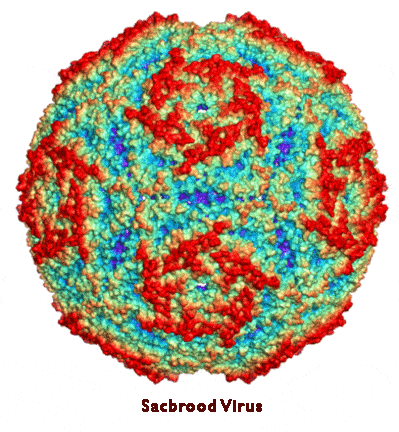 Two studies cited by the authors show that DWV has been detected in newly emerged honey bees not infested with Varroa, suggesting that DWV may be transmitted through vertical transmission. Strong fall colonies, those with strong nutritional reserves, are more likely to overwinter successfully than weaker colonies. It is likely that the detrimental effects of Varroa’s promotion of DWV occur during the entire life of the colony; however, its effect becomes critical in the late summer to fall/winter when the level of Varroa is peaking, and therefore DWV increase and the honey bees’ seasonal decline in immune function coincide.
Two studies cited by the authors show that DWV has been detected in newly emerged honey bees not infested with Varroa, suggesting that DWV may be transmitted through vertical transmission. Strong fall colonies, those with strong nutritional reserves, are more likely to overwinter successfully than weaker colonies. It is likely that the detrimental effects of Varroa’s promotion of DWV occur during the entire life of the colony; however, its effect becomes critical in the late summer to fall/winter when the level of Varroa is peaking, and therefore DWV increase and the honey bees’ seasonal decline in immune function coincide. University of Kentucky, (2016) “The Buzz about Honey Bee Viruses,” written by Laura M. Brutscher and colleagues (http://journals.plos.org/plospathogens/article?id=10.1371/journal.ppat.1005757).
Honey bee viruses are transmitted both horizontally, hive to hive, and vertically, from a queen bee to her offspring. Colony virus transmission is “enhanced by crowded conditions and the routine transfer of nectar, pollen, and bee bread through trophallaxis.” Viruses that are detected in pollen and honey have been found in uninfected queen bees and have then been detected in eggs and progeny. The ectoparasitic mite Varroa plays a major roll in vectoring viruses such as DWV to honey bees. Honey bee viruses may also be spread to other honey bees during visits to floral resources. This form of horizontal transmission is disconcerting and is one of the most difficult forms for the beekeeper to defend against.
RNA interference (RNAi) is an important insect antiviral defense. The introduction of RNAi in the lab has resulted in the reduction of infected bees and larvae. Additional experiments are on-going with the hope that the results will produce a more robust understanding of the function of RNAi and its possible use for reducing viral load. Penn State University, (2020) “Viruses in Honey Bees” (http://extension.psu.edu/viruses-in-honey-bees).
Honey bee colonies are subject to many viruses, however, if the colony is strong and healthy, most “infections are not problematic.” There are currently over 20 viruses affecting our honey bee colonies, with DWV leading the way. Varroa have been shown to transmit DWV by inserting its mouthparts in the bee cuticle, resulting in a direct connection between the signs of DWV and the presence of damaging levels of Varroa. The two paralysis viruses, Israeli Acute Paralysis Virus (IAPV) and Acute Bee Paralysis Virus (ABPV), are also serious problems believed to be vectored by Varroa, and they have been found to be serious health stressors to honey bee colonies. The possible routes of transmission of the viruses may include various forms of contact with other honey bees. Within a colony, these include contact between “drone to queen during mating, queen to egg, nurses to larvae during feeding, and worker to worker during trophallaxis.” More broadly, transmission can also occur when our bees are feeding on contaminated food such as honey stores in their own colony. It is believed that mite transmission of the DWV may select for more virulent strains of the virus. Moreover, due to a reduction in wound healing at the Varroa feeding site, young mites gaining better nutrition grow in number. “Treatment with chemical miticides to control Varroa such as Amitraz”, may “cause bees to be less tolerant to virus infection.” Conversely, providing our colonies with plentiful high-quality diets with pollen from multiple sources can help bees lower colony viral levels. Diagnosing and treating for viral infections is a difficult task. The testing methods to identify viruses are not currently available to the general public, and there are no specific approved treatments for viral infections in honey bees. There are, however, methods to possibly minimize the exposure and damage by viral infections to our honey bee colonies, and these will be discussed in the following (BMP) section.
Iowa State University and the University of Illinois, (April 2020) “Researchers Find Bee Virus Spreads by Altering Honey Bees’ Social Distancing Behavior”, written by Adam Dolezal and colleagues (http://www.cals.iastate.edu/news/releases/researchers-find-bee-virus-spreads-altering-honey-bees-social-distancing-behavior#:~:text=Researchers Find Bee Virus Spreads by Altering Honey,ways that boost the virus’ ability to spread).
Dr. Gene Robinson from the Carl R. Woese Institute for Genomic Biology, University of Illinois at Urbana-Champaign, is one of the contributors to this study focusing on the Israeli Acute Paralysis Virus (IAPV). Dr. Robinson was a keynote speaker at the Maryland State Beekeepers Association November 2019 meeting, and during the Q&A following one of his talks, he discussed an additional study with data showing the ability for honey bees to transmit some viruses to one another through trophallaxis.
This April 2020 study found that the IAPV virus can alter the behavior and physiology in honey bees in ways that boosts the ability for the virus to spread. One of the ways that viruses evolve quickly is through the high-density placement of our colonies, especially the thousands of pollinator colonies allowing for quick horizontal transfer and possible mutation of the deadly viruses. The study also indicated that bees infected by IAPV were more likely to be accepted into foreign colonies by allowing them to circumvent the guards of uninfected colonies. During the study, it was noted that the infected bees engaged in more trophallaxis with the uninfected guard bees, indicating that something in the IAPV infected bees was different, possibly their pheromones. The study also indicated that the IAPV infected forager bees tended to become lost more often than healthy bees further contributing to horizontal transmission. One of the researchers explained that this apparent ability for the virus to alter the behavior of the infected bees may be connected to some of the “human-created environments in modern agriculture.”
Institute of Bee Health, University of Bern, Switzerland, (2020) “Honey Bee Virus Transmission via Hive Products,” written by Dominik Schittny and colleagues (http://www.mdpi.com/2306-7381/7/3/96)
This is the study that inspired me to take on this review. Specifically, this Swiss study was performed to determine whether commercial hive products could transfer viruses to fed colonies. Apparently in Europe it is not uncommon for beekeepers to feed their colonies commercial hive products such as honey and pollen purchased from stores. In order to determine whether there were concerns with pathogen transmission of these products, the researchers
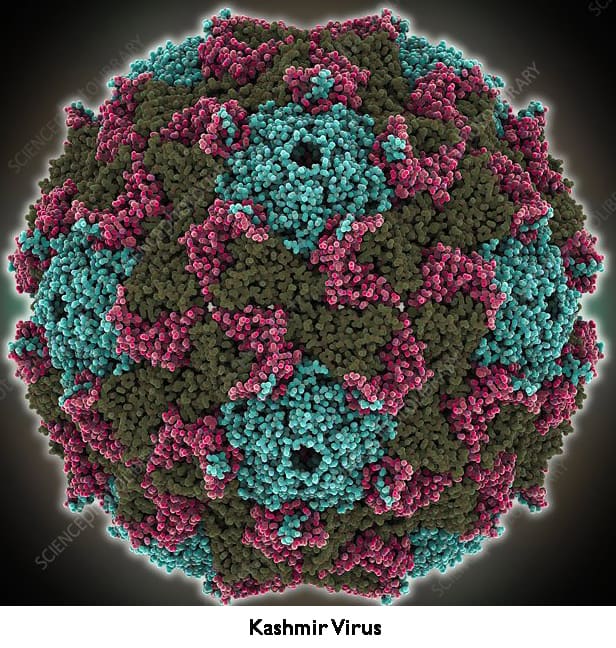 engaged in a study with “fully crossed hoarded cage experiments” in order to estimate the transmission risk of sharing these commercial products with honey bee colonies. They specifically used the pathogen DWV-A for their experiments. They provided the caged western honey bees with samples of contaminated wax, pollen and honey in three different concentrations (low, medium and high) while also maintaining a background level concentration control group. For contaminated honey and pollen, a positive association with mortality and the DWV-A was observed with the high concentrations always resulting in infections, the medium concentrations resulting in infections about 50% of the time, and the low concentrations resulting in infections about 20% of the time. Citing work that concluded that colonies given frames of honey and pollen from infected hives became infected, this study focused on wax, pollen, and honey and did not consider royal jelly or propolis due to their antimicrobial properties. The study used local honey bees that were tested several months apart prior to commencing the study and showed the lowest level of DWV-A, about half of the low concentration level to be fed to the bees in the study. Newly emerged bees were fed the different concentration levels of DWV-A contaminated honey and pollen and were exposed to the contaminated comb.
engaged in a study with “fully crossed hoarded cage experiments” in order to estimate the transmission risk of sharing these commercial products with honey bee colonies. They specifically used the pathogen DWV-A for their experiments. They provided the caged western honey bees with samples of contaminated wax, pollen and honey in three different concentrations (low, medium and high) while also maintaining a background level concentration control group. For contaminated honey and pollen, a positive association with mortality and the DWV-A was observed with the high concentrations always resulting in infections, the medium concentrations resulting in infections about 50% of the time, and the low concentrations resulting in infections about 20% of the time. Citing work that concluded that colonies given frames of honey and pollen from infected hives became infected, this study focused on wax, pollen, and honey and did not consider royal jelly or propolis due to their antimicrobial properties. The study used local honey bees that were tested several months apart prior to commencing the study and showed the lowest level of DWV-A, about half of the low concentration level to be fed to the bees in the study. Newly emerged bees were fed the different concentration levels of DWV-A contaminated honey and pollen and were exposed to the contaminated comb. A limit of this study is that none of the tested bees were reared in the contaminated comb. The contaminated comb was simply placed into the test cages with the bees. The control groups were fed un-contaminated honey and pollen and exposed to un-contaminated comb. The food and comb for the control group were tested and “irradiated with UV light for 120 minutes” to ensure that the samples were free of the virus. During the spiking of the wax, it was discovered that the virus “would degrade at the temperature” that the wax melted, so that the researchers had to apply the virus solution to the surface of the wax. The test cages for the bees in this study consisted of clear polystyrene cups turned upside-down so the lid was the bottom of the cage. Death rates of the control group were less than 15% during the ten-day experiments. The contaminated honey caused greater death than the control with the high concentration causing the highest mortality followed by the medium concentration. The same results were observed in the contaminated pollen with the correlation of highest mortality occurring in the high and medium concentrations of the pollen. No significant differences in mortality were noted in the different contamination levels of the wax.
After the dead bees were tested for DWV-A, the bees from the higher contamination group were found to have “significantly more virus (one to five orders of magnitude) than the initial fed amount” indicating that the high concentration DWV-A group got infected, and the virus was replicating within the bees. In the medium DWV-A concentration group, only two in five were infected with the honey and pollen, and three in ten were infected with wax. In the low DWV-A group, only one in ten were infected with the honey and two in ten infected by the wax, with none being infected by the pollen.
The results indicate that DWV-A transmission via hive products is feasible and that mortality increases when the bees are fed higher contaminated levels of honey and pollen. The different concentrations in the wax did not show differences in mortality over the control possibly because the wax did not serve as a food source. The concentration of the DWV-A in the dead bees from the low concentration level group showed less DWV-A copies than were fed indicating a lower rate of infection in this group.
The study cites a 2010 paper that showed “that viruses contained in frames of honey and bee bread remain infective even after being stored for 6-months at room temperature.” Still, “it is known that viral particles exposed to environmental conditions” such as humidity and heat may quickly deteriorate. The study found that honey was the most efficient transmitter of the DWV-A; however, the researchers opine that in non-laboratory conditions, the transmission of the virus in low concentrations is only about 2% and is considered low risk for low contamination levels in pollen. The odds of transmission of the virus through wax foundation is considered minimal since the wax is melted during processing probably killing the virus. By contrast the practice of transferring wax comb from one hive to another should be considered a possible vehicle of transmission.
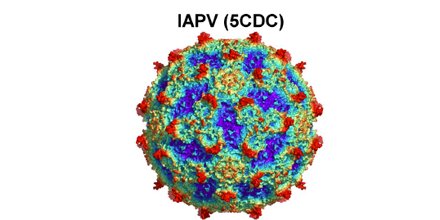 SUMMARY
SUMMARY Through my review of these studies, several themes are repeated:
- Strong healthy colonies exhibit Social Immunity and are less likely to succumb to death by viruses,
- Abundant and diverse nutritional resources reduce the negative stresses caused by Varroa and viruses,
- Summer bees appear to have a more robust immune defense system,
- Winter bees can have higher DWV loads,
- Viruses can be spread vertically and horizontally,
- Viral contaminated hive products appear to be able to transmit viruses to honey bees,
- Low levels of virus infection appear to result in low risk of transmission,
- The deleterious effects of DWV becomes greater in late summer when Varroa levels are peaking,
- Dedicated control of Varroa is our best tool to reduce the deadly effects of viruses in our honey bee colonies.
By necessity, the researchers must set up sterile environments for their testing. The world of the honey bee as a part of the superorganism includes birth, life, work, fulfillment, death, and, yes, stress. A thorough application of this information to the lives of bees in our colonies is yet to be discovered, but if our goal as beekeepers is to minimize the stresses that our colonies must work into their survival equation, then I think a serious appraisal of these types of studies is worthy. Based on this short and very limited review, I have prepared a list of BMP, many of which I have been taught and have been teaching for years. I will note when I think that I am being over-cautious with some of them, but I also appreciate that we all have our own beekeeping philosophies, and if this list generates questions and discussion, then all the better. In beekeeping there are many times different answers for the same question, but perhaps Winnie the Pooh said it best: “You never can tell with bees.”
Best Management Practices:
CONTROL VARROA MITES:
- Develop a specific Varroa Management Plan (VMP) for your apiary(s) (visit Honey Bee Health Coalition’s website),
- Perform Varroa Mite testing frequently starting in spring and increase frequency in late summer through fall treating when Varroa levels are above the recommended action level,
- When purchasing new packages and nucleus colonies, inquire what Varroa treatments were completed by the seller, if any,
- Pre-purchase your VMP Varroa treatments to ensure availability,
- Use the following BMP to help reduce Varroa exposure.
Reduce Horizontal Transmission:
- Limit the number of colonies per apiary,
- Consider increasing the distance between colonies,
- Orient colonies to reduce drift,
- Use anti-robbing screens,
- Avoid sharing frames from sick colonies to healthy ones,
- Avoid combining sick colonies with healthy ones,
- Avoid using previously used equipment in your colonies,
- Sanitize when moving from one hive to another.
Cultural:
- Keep resistant bees (VSH, Russian, Survivors, etc.),
- Provide a diverse high-quality diet (see http://beescape.org/),
- Reduce pesticide exposure.
Mechanical:
- Remove old combs (consider removing comb after 2 years instead of 3),
- Encourage colonies to build new comb in the spring through mid-summer,
- Encourage propolis deposition in the hive bodies.
Reduce disease transmission:
- Identify Varroa infested colonies, DWV or Paralysis viruses in the colony during inspections and treat for Varroa and quarantine affected colonies (may be over cautious to quarantine),
- Avoid using diseased hive resources in other colonies,
- Test ½ cup of the dead bees from a dead-out for Varroa and if the numbers are high: to minimize risk consider doing the following: o Not using the hive resources in other colonies (may be over cautious not to use the resources),
- Clean empty comb may be ok to re-use,
- Deep freezing any frames for a minimum of 48 hours prior to re-use,
- Exposing clean comb to UV light* following freezing and prior to re-use,
- Contact your local bee inspector for an inspection of your equipment and advice on causes for dead-outs.
New Colony Set Up:
- For new packages, test for Varroa during the installation and treat for Varroa for packages with Varroa levels above the recommended action level. Take care when installing new packages on comb from other hives. Clean empty comb from a honey super may be the lowest risk for use (see the reduce disease transmission section above). Consider placing only two clean combs during the package installation, and feed 1:1 syrup to encourage comb building on the remaining foundation frames. Avoid feeding honey stores from dead-outs or mite infested colonies.
- For new nucleus colonies, verify that Varroa has been managed from the seller prior to pick up, and then test for Varroa upon installation of the nucleus colony into your equipment. Treat for Varroa in colonies above the recommended action level. If high levels of Varroa are detected contact the seller.
Healthy colonies exhibit Social Immunity and appear able to navigate the four P’s (pests, pathogens, pesticides, and poor nutrition). Our responsibility when husbanding our bees is to remove or minimize as many stressors as possible from our bees in the pursuit of supporting strong healthy colonies. There are many stressors that we cannot control, so our energies should be focused on those that we can impact. You may not be able to adhere to all the above BMP, but the more BMP that you can adopt, the less stress your colonies will endure. You will help them thrive, and your bees will thank you in their special ways.
*A quick review of the availability of UV type C equipment (which is the best form of UV light for disabling viruses) indicates that there are very few if any safe and reliable versions of UV type C equipment available for the average consumer. It does appear that heat in the form of sunlight may be a better/safer alternative. Studies show that temperatures near 130F will disable viruses. That temperature for an extended period may also soften beeswax (with a melting temperature of 144F), but I think exposing the comb to several hours of sunlight will not hurt and may reduce the viable viruses that may be attached to the comb.
Bottom line is that we do not have a good solution yet, but if we are careful and make good choices, I think that we can minimize the impact of the viruses on our colonies.
Remembering Pat Haskell: Master Beekeeper and Master Educator
- Remembering Pat Haskell, Master Beekeeper
There is sad news to tell the bees: EAS Master Beekeeper and long time MSBA member and Board Member Pat Haskell passed away on May 17, 2021.
Pat was a champion of beekeeping education and a symbol of beekeeper mentorship, contributing greatly to the advancement of beekeepers both locally, regionally, and nationally. Pat worked tirelessly to improve beekeeping skills within Virginia and the surrounding region. She played a major role in founding many clubs, and taught the first beginning beekeeping courses ever offered in the District of Columbia. She was a founding member of the Northern Virginia Beekeeping Teachers Consortium, a pillar of the Beekeeping Association of Northern Virginia.
Together with her husband Jim, Pat was responsible for the successful organization of the Northern Virginia Teaching Consortium, a multi-county educational effort teaching the same curriculum to beginning beekeepers that has reached thousands of new beekeepers; ran the first multi session intermediate beekeeping class in Virginia; held in house study sessions for the Eastern Apicultural Society (EAS) master beekeeper exam and the Virginia certification exams; presented workshops on a variety of subjects; organized several multi day queen rearing educational workshops; as led efforts to share genetic queen stock within the regional beekeeping community; and presented nationally both at EAS and the American Bee Federation (ABF) contributing important data to the discussion of colony survival based on queen stock.
Pat was devoted to providing education and preparation for the EAS Master Beekeeper certification since she herself was certified in 2003. She helped many others become master beekeepers through her open house and giving nature and Pat’s “old oak table” study group was well known. Pat was also one of the original champions of promoting the use of nucleus colonies in a sustainable apiary and encouraged local beekeepers to start rearing queens. One time she and her husband picked up an entire colony of honey bees to be able to graft from its special queen and then returned dozens of virgin queens to the community of beekeepers.
We are especially grateful for Pat’s mentorship and leadership in beekeeping education throughout the MidAtlantic and for being such a champion of the benefits of exploring outside of the State to broaden our beekeeping education through EAS, ABF and more. Pat mentored many in the community and together with her husband Jim were role models of what education and mentorship can and should be.
She is survived by her husband Jim; daughters Heidi J. Loechler of Peculiar, MO and Heather D. Ramsey of Bellevue, NE; six grandchildren and two great grandchildren.Burial will be at the Kowanda Methodist Church, Garden County Nebraska in early July following graveside services. Time and date TBD.
Cumberland Seeks Bee City USA Status
- Cumberland Pursuing “Bee City USA” Designation
By Ben Cooper
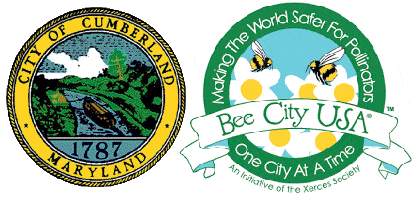 Beekeepers around Cumberland have come together to present the idea of Cumberland, Maryland joining the ranks of the Free State's Bee Cities, Bee Counties and Bee Campuses. On May 3, Ben Cooper presented the idea to the mayor and city leaders of Cumberland, and received an encouraging response. Cumberland is already an official Tree City, and is home to a rich natural setting including the North Branch of the Potomac, creeks and mountains both within the city limits and surrounding them.
Beekeepers around Cumberland have come together to present the idea of Cumberland, Maryland joining the ranks of the Free State's Bee Cities, Bee Counties and Bee Campuses. On May 3, Ben Cooper presented the idea to the mayor and city leaders of Cumberland, and received an encouraging response. Cumberland is already an official Tree City, and is home to a rich natural setting including the North Branch of the Potomac, creeks and mountains both within the city limits and surrounding them. The Bee City Program in Cumberland seeks to "Think Globally and Act Locally" by providing native plants for native pollinators, providing native nesting sites, and reducing the use of pesticides. The mission: make the city a better place for pollinators.
Cumberland's mayor, Ray Morriss, said he’s interested in Cumberland becoming an official Bee City.
“It sounds good. Anything that you can do to help the environment ...And it sort of fits out here where we are,” Morriss said. “Allegany County makes it a great location to do something like this.” He also pointed out the city's longterm involvement in nature and the outdoors. Next steps in the process involve connecting the beekeepers with the relevant city staff to learn more.
To become a bee city, commitments like these are developed and laid out in a resolution that is adopted by the city council. In Cumberland, these efforts will include both city staff and organizations including Let’s Beautify Cumberland, Allegheny Mountain Beekeepers Association, Cumberland Flower Club, Master Gardeners, Student groups from local schools and colleges, and Scouting groups.
How will Cumberland become a Bee City USA? What is required?
- Establishing a standing committee to oversee and advocate for pollinators. Membership would include city staff, organizational representative, and interested volunteers.
- Committee should be managed by a certified city affiliate or non-profit 501c3 organization and have regularly scheduled meetings that would be open to the public.
- Create and establish pollinator habitat on public and private land within the city of Cumberland by increasing the abundance of native plants and nesting sites.
- Reduce the use of pesticides and herbicides.
- Incorporate pollinator-friendly best management practices into city plans and policies.
- Host Pollinator awareness events such as Let's Beautify Cumberland, Native Plant Sales, Heritage Days, etc.
- Publicly acknowledge Bee City USA with signage and an online presence .
- Pay an initial application fee and annual renewal. The fee is based on the city’s population. If Cumberland is roughly 20,000, the fee would be $200.
The group is already brainstorming projects for Bee City Cumberland, including a Flood Control Structure right-of-way or "No Mow May."
You can learn more at www.BeeCity.org and www.xerces.org.
EAS 2021 in Kentucky!
- EAS 2021 in Kentucky: “Bee Connected”
The Eastern Apicultural Society Conference for 2021 will take place August 11-13 at the Paroquet Springs Conference Center in Sherpherdsville, KY!
The annual conference will look a bit different this year, but with the same high level of educational expertise and fun as in previous years. EAS' usual five day conference will be condensed to three days. There will be Master Beekeeping Testing, hands-on outdoor Apiary learning and presentations by interesting speakers scheduled for each day. The social events include an outdoor barbecue, awards, and auction on the evening of Friday, August 13th. At this time, there will not be a honey show. The upcoming EAS Journal will have more details.
Shepherdsville, KY is approximately 20 minutes from the two main airports in Louisville, KY. There are many activities, restaurants and hotels in the area. Paroquet Springs Conference Center can accommodate 1000 participants, but we are limiting the event to 300 participants in order to maintain social distancing in the main presentation hall.
Registration is now open to all current EAS members. Since we are limiting attendance to 300, there will be no walk-in registrations for the event. Masks indoors will be mandatory. If at all possible please get a vaccine before coming. We want to hold a safe, educational, fun event.Stay well and I hope to see in Kentucky !
You can join the EAS at www.easternapiculture.org. It really is a great way to take your beekeeping to the next level and support a nonprofit organization whose mission is to support beekeeper education and honeybee research.
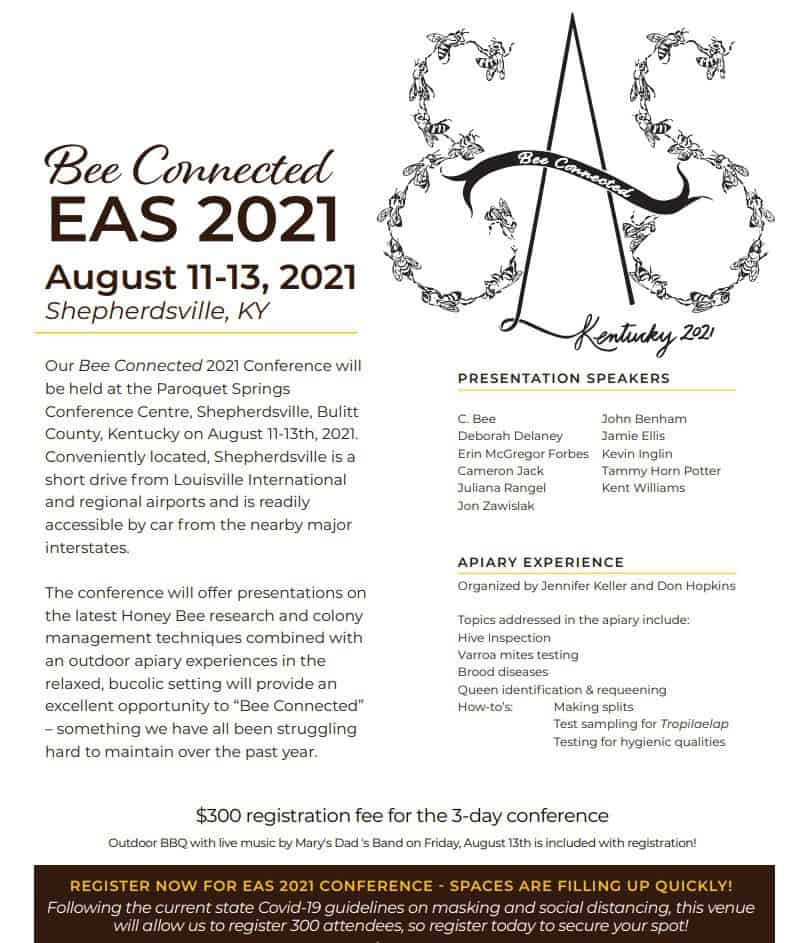
Zac Lamas and Nano Colonies: Exciting New Tool and a Video, too!
- Zac Lamas and Nano Colonies: Exciting New Tool and a Video, too!
In April, Zac Lamas, a beloved UMD PhD student in the Hawthorne Lab, gave the DC Beekeepers a talk on a cool new approach to bringing field trials into the lab, and why this matters to beekeepers. Zac used his guest room bathroom over the pandemic to create "Nano Colonies."
Zac studies Varroa destructor biology and behavior, and how that drives viral transmission in our colonies. He has had a side project for a while now, one needed to look at the questions he is studying, but he realized he might be able to make a tool that could be used later for other areas, like pesticide research.
He created Nano Colonies, tiny 100-bee queen right colonies that actually function, to help bridge the practice of research in the field and in the lab. In the lab, bee researchers have used small groups of bees in artificial arenas for long time, but then the story ends and it's hard to ask questions about what comes after. To continue to function as a colony, however, and display normal behaviors that can then be influenced by experimentally changing one or another factor...well, that is just plain cool, as well as affordable and scalable!
Both the Montgomery County Beekeepers (a lot) and the DC Beekeepers Alliance (a little) have given financial support for Zac's work, in part because it is inspirational and in part because it has so much potential for our future understanding of our bees and science about them.
Watch how Zac developed these colonies-in-a-cup, and what he is doing with it right now!
MSBA Thanks Donors!
- MSBA Thanks Donors!
by Stefanie Ottenstein, MSBA Treasurer
Anyone who visits our website can see the many ways to donate to beekeeping in Maryland, from our own association to research to good causes in the bee world at large!
 In particular, MSBA collects donations from its members on behalf of the Maryland Department of Agriculture's Apiary Inspection Fund (AIF) and Dr. Samuel Ramsey's Ramsey Research Foundation (RRF).
In particular, MSBA collects donations from its members on behalf of the Maryland Department of Agriculture's Apiary Inspection Fund (AIF) and Dr. Samuel Ramsey's Ramsey Research Foundation (RRF). In fact, donations to the Apiary Inspection Fund have reached a historic level this year!
The total collected and remitted in 2020 to AIF was $6,836 and to RRF was $1,549. Please visit mdbeekeepers.org to learn more about these organizations and to donate.
MSBA is also fortunate to receive donations that are based on connections between community members and friends during these distant pandemic times! Recently, Susan Waxter also made a donation of $100 to MSBA in honor of Deborah Wheeler's birthdayI

Beekeeping News and Notes
- Beekeeping News and Notes: June 2021
Scientists evolve a fungus to battle varroa
When spores of Metarhizium anisopliae land on a varroa mite, they germinate and grow tiny tubes that drill through the exoskeleton and grow throughout the insect, killing it. “They can literally bust through the shell,” says Jennifer Han, an entomologist at Washington State University (WSU), Pullman. The fungus might have been a great biopesticide, but it's too warm inside a bee colony for them to survive. So they bred several generations to be increasingly heat tolerant, then generations to be more and more deadly to varroa, and finally figured out how to culture it on rice that the bees would try to remove and thereby spread around. They go mite knockdowns on the oxalic acid level! Hurdles remain: more efficacy testing, figuring out how to make it affordable, figuring out how to make it practical to use. But get this: it's safer than oxalic (for bees AND humans).
Radar tracking uncovers mystery of DCAs

heat map of flight shows DCAs
A new study from Queen Mary College is the first ever attempt to track the flight paths of individual drones and observe them in the absence of lures, which may distort observations. To track the flight paths of drones, researchers attached a small antenna-like electronic device, known as a transponder, to the back of individual honeybees. The scientists found that drones alternated between periods of straight and convoluted, looping flight patterns within a single flight. On further investigation they showed that phases of looping flight were associated with four distinct aerial locations where drones congregated and these specific areas were consistent over a two year period. Dr Joe Woodgate, lead researcher, is also part of the 'Brains on Board' programme that aims to create robots with the navigational abilities of bees. He added: "We believe that bee-inspired robotics will play a role in improving robotics and artificial intelligence in the future. Understanding how bees select and find distant goals based on their explorations of their surroundings will be important for this."
Deformed Wing Virus: Increasing Virulence linked to Pupal Cannibalism
Beekeepers have been breeding for hygienic behavior in our long running battle with Varroa destructor, but like every other management decision, there can be unexpected consequences. Researchers including local heroes Jay Evans, Judy Chen and Zac Lamas used genetically tagged DWV to investigate virus transmission to and between worker bees following pupal cannibalisation under experimental conditions. They demonstrated that cannibalization of DWV-infected pupae resulted in high levels of this virus in worker bees and that the acquired virus was then transmitted between bees via trophallaxis, allowing circulation of Varroa-vectored DWV variants without the mites. Despite the known benefits of hygienic behaviour, it is possible that higher levels of VSH activity may result in increased transmission of DWV via cannibalism and trophallaxis.
Honeybees are accumulating airborne microplastics
Danish scientists in Copenhagen have demonstrated that the plumose body hairs that are so dandy for attracting pollen are also effective sampling gadgets for microplastics in the environment. Researchers collected honeybees from apiaries located in the city centre and from nearby semiurban and rural areas, and showed the presence of microplastics in all sampled locations. The highest load corresponded to urban apiaries, but comparable number of microplastics was found in hives from suburban and rural areas, which points to the easy dispersion of small microplastics by wind. The scientists postulate that the bees could be a useful sampling tool for researchers studying pollution.
Dutch Bees Trained to Detect COVID-19 Infections
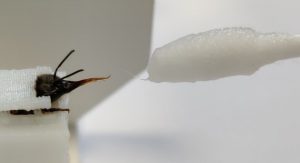
Bee being trained to smell COVID-19
Start-up InsectSense and Wageningen Bioveterinary Research have trained bees to extend their tongues when they smell the coronavirus. The coronavirus, like other diseases, causes metabolic changes in the body that causes a smell. Bees can be trained within minutes to recognize the scent of samples infected with SARS-CoV-2. "We collect normal honeybees from a beekeeper and we put the bees in harnesses," he said. "Right after presenting a positive sample we also present them with sugar water. And what the bees do is they extend their proboscis to take the sugar water," according to research leader Wim van der Poel. Because bees are everywhere and inexpensive, the research team hypothesizes that this could evolve as a diagnostic tool for low income countries.
New research deepens mystery about evolution of bees' social behavior
Researchers at the Universidade de São Paulo have mounted perhaps the most intricate, detailed look ever at the diversity in structure and form of bees, offering new insights in a long-standing debate over how complex social behaviors arose in certain branches of bees' evolutionary tree. The report analyzes nearly 300 morphological traits in bees, how those traits vary across numerous species, and what the variations suggest about the evolutionary relations between bee species. The result offers strong evidence that complex social behavior developed just once in pollen-carrying bees, rather than twice or more, separately, in different evolutionary branches. Corbiculate bees–those that possess corbicula, or pollen baskets, on their hind legs–encompass honey bees, stingless bees, bumble bees, and orchid bees. Among them, honey bees and stingless bees are the only groups with highly complex social behaviors.
Beekeeping Humor: Spring 2021
- Beekeeping Smiles for Summer 2021
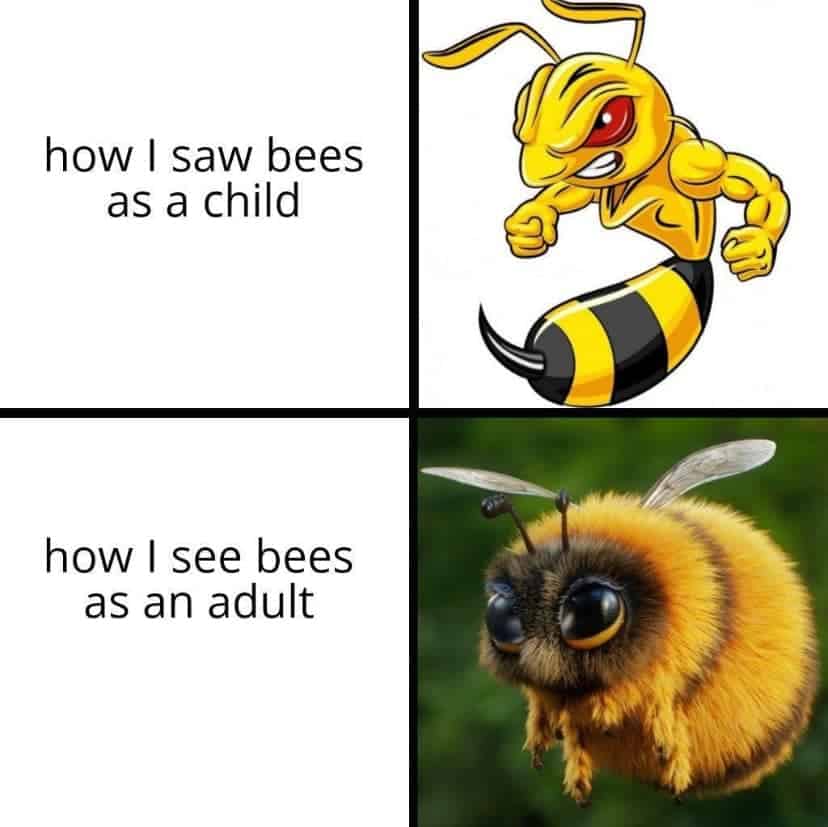
Some bad bee jokes:
"What do unionized bees ask for? More honey and shorter working flowers."
"What would bears be without bees? Just ears."
"What do you call a bee that lands on a racing dog? A Greyhound buzz.""The First Law of Beekeeping: For every beekeeping idea, there exists an equal and opposite idea.
The Second Law of Beekeeping: They’re both wrong."And last:
"What do you say when bees colonize your chest cavity and start a farm? Bees till my beating heart."
Winter Meeting 2021 Information
- 2021 June 12 MEETING
RECORDED Webinar!
TO VIEW: First login to this website, then SCROLL to the BOTTOM of this webpage.
Join the Maryland State Beekeepers Association for a fascinating day packed with insights on honey bees & useful tips to keep them.
At this meeting you will learn:
* What is killing bees and what can we do about it?
* The mating biology of honey bees
* How Social Immunity fights bee diseases
* Maryland bee newsWHAT: Speakers include Jamie Ellis, & Marla Spivak
DAY: 06/12/2021 Saturday, June 12, 2021
TIME: 8:30AM- 3:30PM
WHERE: On-line Only.
HOW TO VIEW: First login to this website, then SCROLL to the BOTTOM of this webpage.SESSION TOPICS PRESENTER 9:00 Welcome Kim Mehalick, MSBA President 9:10 Inspector's Report: "What’s happening in Maryland with Honey bees? Cybil Preston, Maryland State Chief Apiary Inspector 9:35 EAS Update Patti Wong 9:45 "What is killing bees - And what can we do about it?" Jamie Ellis, PhD, Professor of Entomology, University of Florida 10:30 "Social Immunity - Honey bees' health care" Maria Spivak, Professor in Entomology, University of Minnesota 11:30 "Helping military vets through beekeeping" Monica Schmitt, Founder of Mission Beelieve 12:00 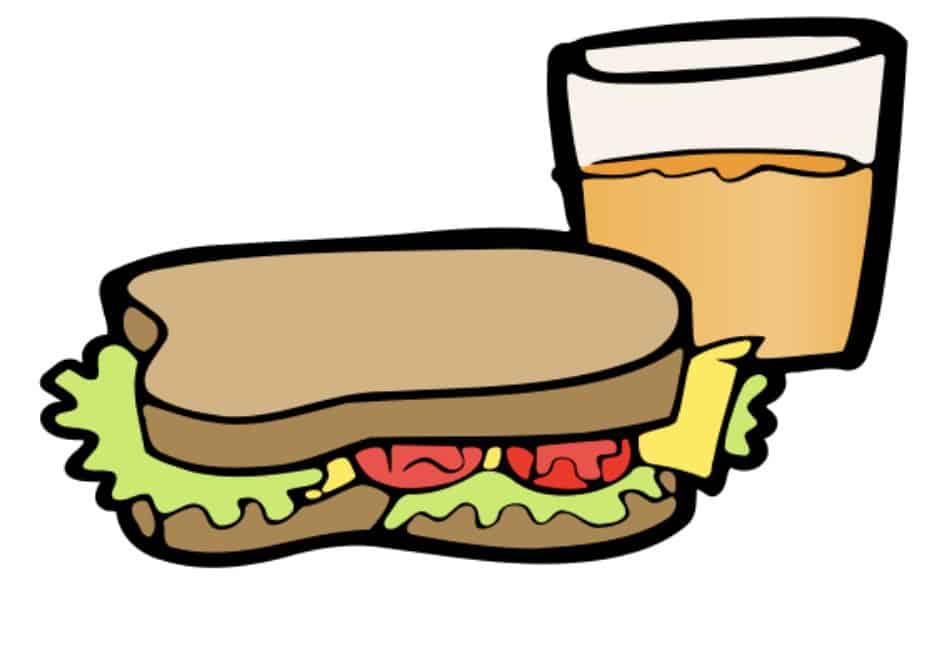 Lunch Break
Lunch Break12:30 Bee Squad Mark Dykes, Bee Squad Coordinator, University of Maryland 1:15 "The mating biology of honey bees" Jamie Ellis, PhD, Professor of Entomology, University of Florida 2:30 Dr. Jamie Ellis will be staying on for Questions and Answers in “Stump The Chump” Get some good questions ready Jamie Ellis, PhD, Professor of Entomology, University of Florida 3:00 Closing Remarks Kim Mehalick, MSBA President Keynote Speaker
JAMIE ELLISTALK #1 What is killing bees and what can we do about it?
In many ways, beekeeping is harder than ever. Colony loss rates are high in many areas around the world. Old pests and pathogens continue to cause problems. New pests and pathogens threaten colony health. With all of the confusion swirling around bee health, we are left to wonder what the principle killers of honey bee colonies actually are. Dr. Ellis will discuss what is killing bees around the world and what can be done to reduce the losses.TALK #2 The mating biology of honey bees
Individual honey bees reproduce. In this lecture, you will learn about the mating and reproductive habits of queen and drone honey bees.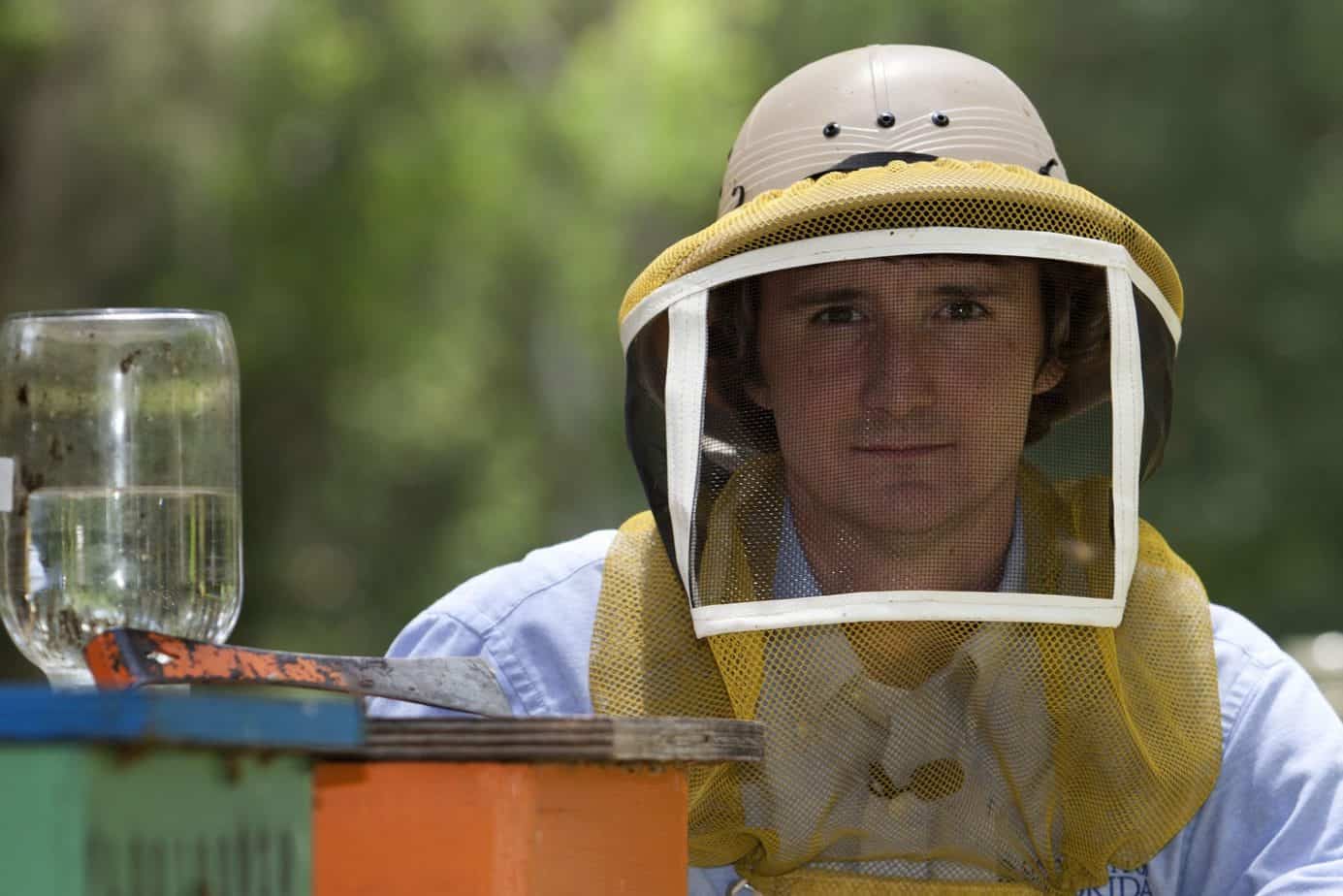
JAMIE ELLIS bio
Jamie Ellis is the Gahan Endowed Professor of Entomology in the Department of Entomology and Nematology at the University of Florida. He has a BS degree in Biology from the University of Georgia (USA) and a PhD in Entomology from Rhodes University in South Africa. At the University of Florida, Jamie has responsibilities in Extension, instruction, and research. Regarding his Extension work, Jamie created the UF/IFAS Bee College and the UF/IFAS Master Beekeeper Program. As an instructor, Jamie supervises PhD and masters students. Currently, Jamie and his team have over 30 active research projects in the fields of honey bee husbandry, conservation and ecology, and integrated crop pollination.Keynote Speaker
MARLA SPIVAKTALK: Honey bees have a remarkable health care system called "social immunity"
I will discuss two forms of social immunity, hygienic behavior and propolis collection, and explain how they benefit honey bee colonies. I hope to convince everyone to pay more attention to bees' ability to weed out diseased and Varroa-infested brood through hygienic behavior, and to love the presence of propolis in bee hives.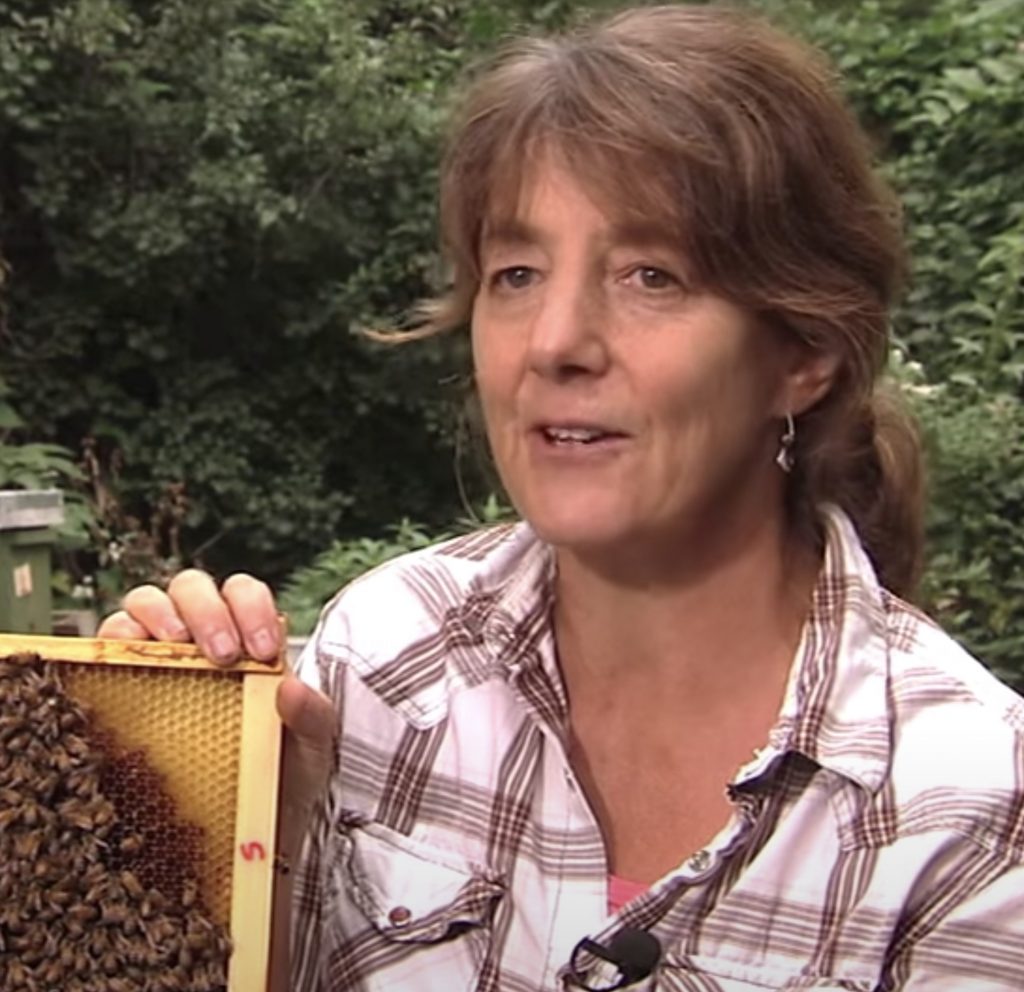
MARLA SPIVAK autobiography
Marla Spivak is a MacArthur Fellow and McKnight Distinguished Professor in Entomology at the University of Minnesota. She obtained her Ph.D. in Entomology at the University of Kansas 1989 on the ecology and identification of Africanized honey bees in Costa Rica. Her current research efforts focus on protecting and enhancing the health of bees through social immunity and bee breeding.VIEW THE RECORDING:
IF you are logged in, and a current MSBA member, you will see the video link below:

